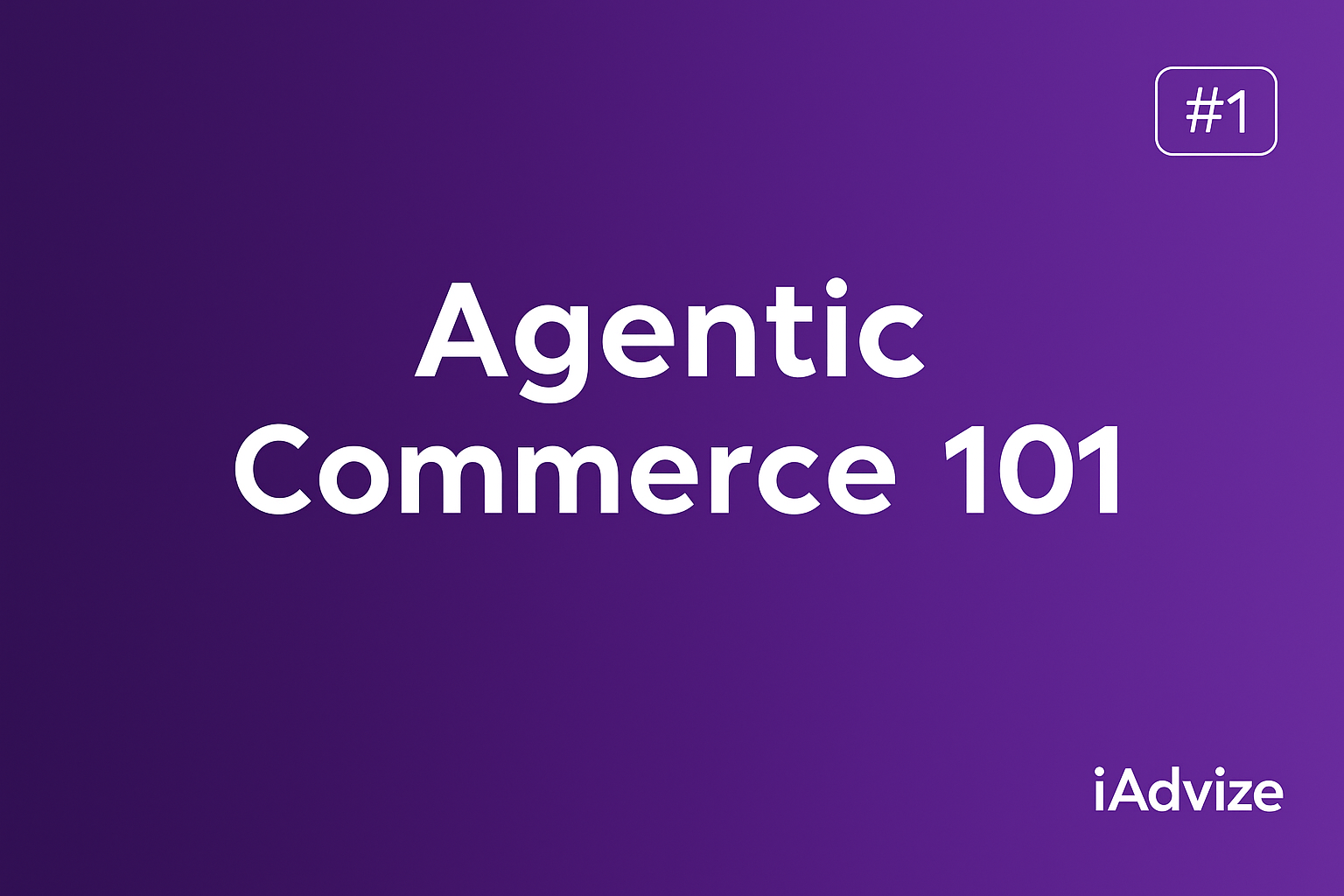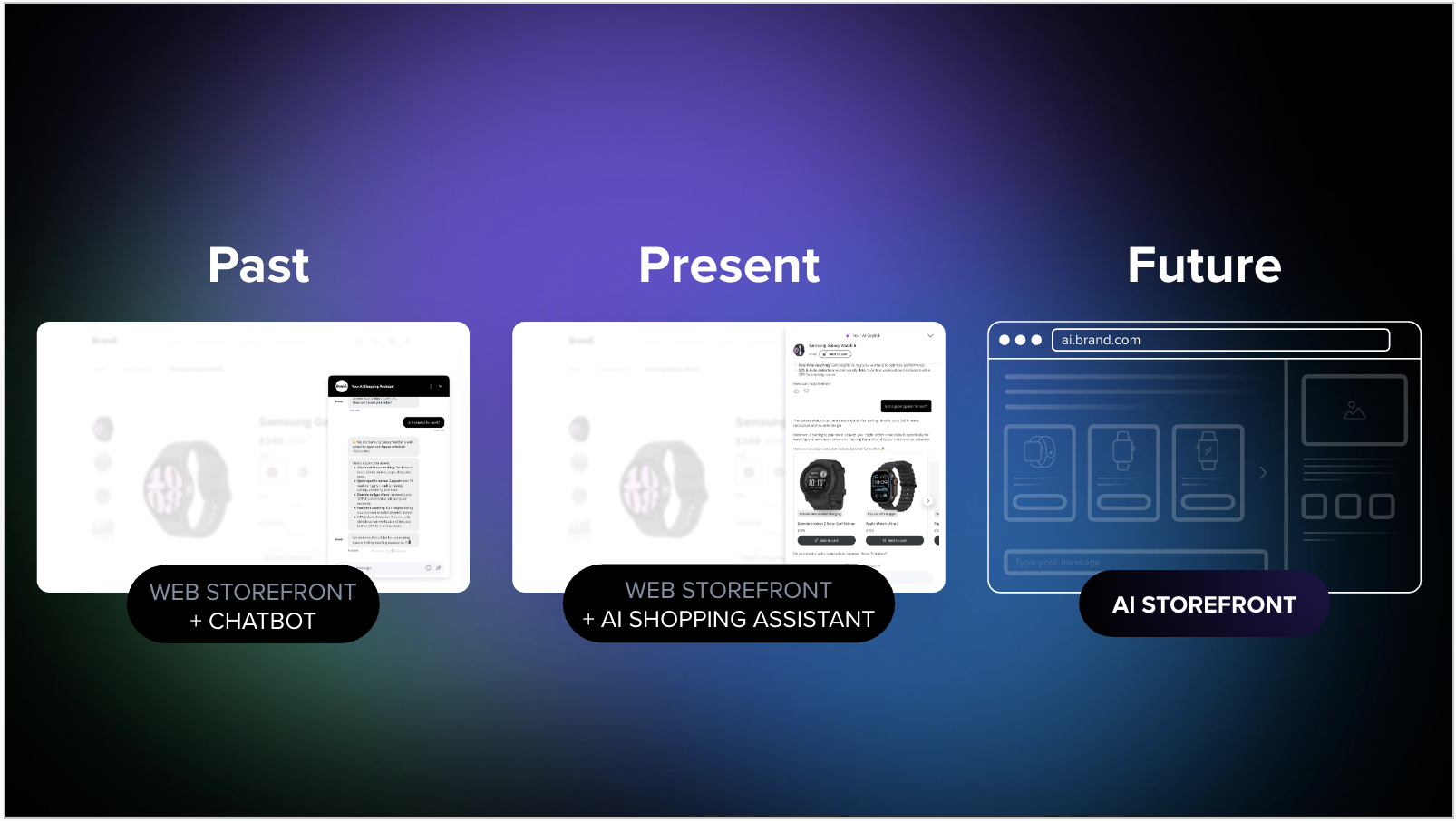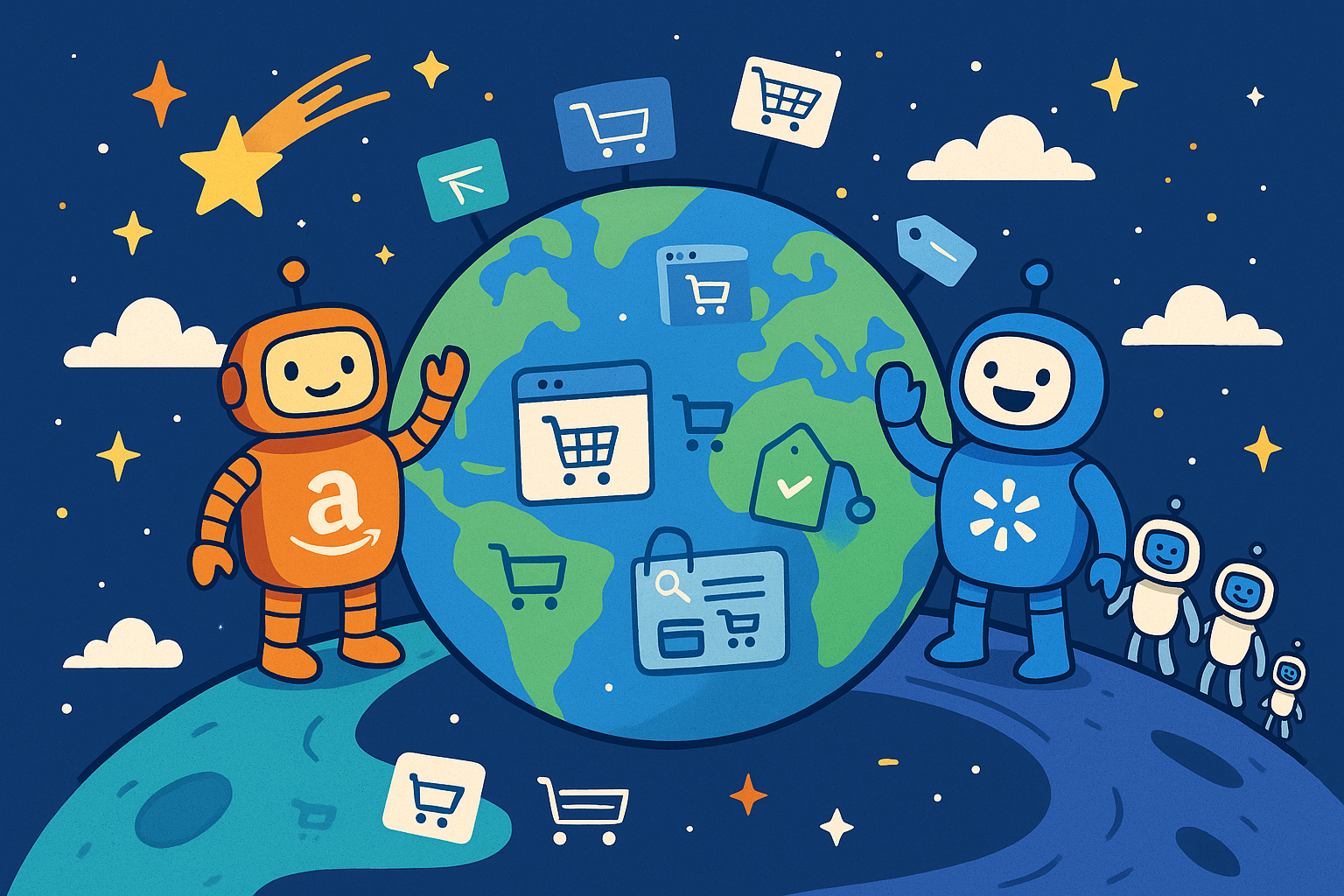What Is Agentic Commerce? Why Every E-Commerce Leader Must Act Now
Mike de la Cruz, President, iAdvize

The search bar is dead.
Consumers no longer want to type keywords and scroll. They now start with AI assistants. Unlike search bars, AI assistants don’t stop at discovery: they compare, decide, and even checkout. The funnel collapses into a single interaction.
In two years, will consumers still visit your site, or will they simply ask ChatGPT or Perplexity to buy for them?
The End of Browse-and-Hope Commerce
For decades, online shopping meant browse-and-hope: search, menus, filters, and endless scrolling. The outcome? 97% of journeys fail. Conversions are stuck at 2–3%. Billions in ad spend and optimization haven’t changed the math.
The problem is structural. Browse-and-hope commerce puts the work on the shopper. And shoppers are done. They’re abandoning keyword search and option overload. Retailers, frustrated by declining ROI, are ready for something better or risk being left behind.
What Is Agentic Commerce? It’s Shop-for-Me Commerce
Agentic commerce is where AI does the shopping. It anticipates intent, guides decisions, and even completes purchases for the shopper. The funnel doesn’t shrink. It collapses into a single step.
This is the Shop-for-Me journey: consumers offload discovery, comparison, and purchase to AI assistants. They set the intent, and AI does the work. The path from “I want it” to “I have it” collapses into a single interaction.
The adoption curve has been steep:
- Adobe tracked one trillion U.S. retail visits and found traffic from generative AI surged 1,200% in just seven months, doubling every two months.
- Vertical agents are reshaping categories. AI fashion assistants Alta and Daydream prove Shop-for-Me will be specialized, not generic.
- AI assistants won’t stop at discovery. Capgemini found 71% of shoppers want generative AI woven into the entire shopping journey: consideration, decision-making, and purchase.
This is a structural reset, not hype. That’s why Perplexity is partnering with PayPal. Why Visa and Mastercard are embedding AI in checkout. Why every vendor is racing to be AI compatible.
The reset is now. Brands that adapt first will win. Those that don’t will be ignored.
Why Brands Still Matter in an AI-First World
If consumers start with ChatGPT or Perplexity, do brand websites disappear? Not if they deliver the three Cs:
- Confidence: authenticity, reputation, trust, and support.
- Curation: exclusive drops, loyalty perks, and special collections.
- Connection: immersive experiences that tell your story and build preference.
The storefront will not vanish, but there are now two audiences:
- Consumers who want brand connection but expect frictionless agentic journeys
- AI assistants that are becoming decision-makers themselves
Your storefront must serve both or become invisible.
Your AI Shopping Assistant Is Now Mission-Critical
Every major retailer is embracing Shop-for-Me: from Amazon to Walmart, Zara to Zalando.
Amazon CEO Andy Jassy put it bluntly: “every part of our retail customer experience will be reinvented with generative AI.” Launched in 2024 and promoted for Prime Day 2025, Amazon Rufus is already projected to drive $700M in sales.
You don’t need to be at Amazon’s scale. Kendra Scott re-framed its AI assistant as a sales enabler fueling a 160% YoY growth and a 6× conversion lift. Similarly, beauty brand Mademoiselle bio recreated the high-touch in-store experience online achieving a 6× conversion rate.
The playbook is clear: AI assistants aren’t optional. They are the new growth engine for retail.
Your AI Shopping Assistant is Your Next Storefront
AI shopping assistants are rapidly evolving to become the brand’s storefront, serving both consumers but their personal AI assistants. They are progressing along a clear maturity curve:
- Yesterday (2024): AI Chatbots
Built for support, answered reactive questions, clunky interfaces. - Today: AI Sales Associates
Built for conversion, proactive recommenders, blends into the shopping experience. - Tomorrow (2026+): AI Storefronts
Autonomous, anticipatory, serving both humans and their AI agents.
What began as support is becoming the storefront. The first to reach AI Storefront status will own the customer relationship.
Three Moves to Win in Agentic Commerce
Agentic commerce will reshape the economics of online retail. Expect:
- Less direct traffic. Journeys begin with AI, diverting direct traffic. SEO shifts to GEO (Generative Engine Optimization).
- Higher conversions. Visitors will be more intentional and ready to buy. Leaders should target 20% conversion, not 2%.
E-commerce leaders should act now with three moves:
-
-
- Make your AI assistant the centerpiece. It’s no longer optional. Align your CEO, business, and tech leaders to make it your differentiator.
- Launch and learn. Pilot an AI assistant to build data moats, test conversion impact, and accelerate readiness. Launch fast, even if limited. Learn faster.
- Build your playbook. Measure which AI interactions lift conversions, reduce returns, or increase cross-sell.
-
The Next Two Years Belong to Agentic Commerce
Agentic commerce isn’t coming. It’s here. Browse-and-Hope is collapsing. Shop-for-Me is rising.
By 2027, AI will assist all shopping journeys. The question isn’t whether consumers will delegate shopping. The question is: will they delegate to you or to your competitor?
Leaders who act now will secure the customer relationship. The rest will be reduced to suppliers for someone else’s AI.

.png)
.png)




